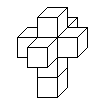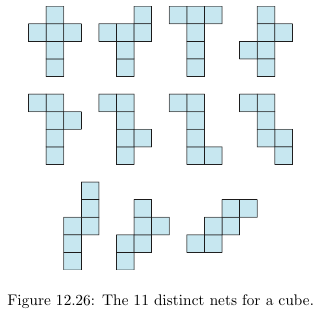There are (apparently) 261 distinct unfoldings of the 4D hypercube, a.k.a., the tesseract, into 3D.1 These unfoldings (or "nets") are analogous to the 11 unfoldings of the 3D cube into the plane.2 Usually only one hypercube unfolding is illustrated,

(Image from this link.)
the one made famous in Salvador Dali's painting Corpus Hypercubus. My question is:
Q. Has anyone made models/images of the 261 unfoldings as solid objects in $\mathbb{R}^3$?
(If not, I might do so myself.)
1Peter Terney, "Unfolding the Tesseract." Journal of Recreational Mathematics, Vol. 17(1), 1984-85.
2

Update. See also the followup question, "Which unfoldings of the hypercube tile 3-space: How to check for isometric space-fillers?."


